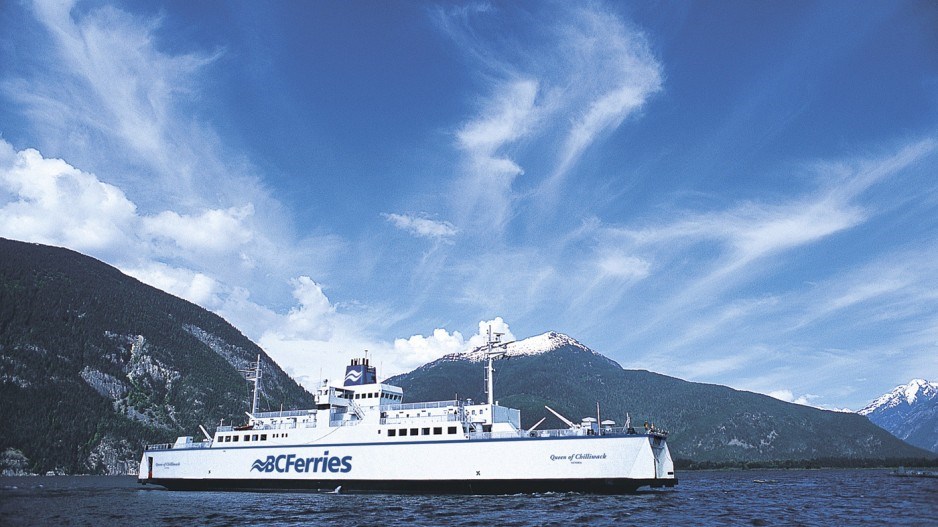Do the math, and it’s not hard to see why business at Bernward Kalbhenn’s lodge in Kleena Kleene is down 65% compared to last year.
Kalbhenn has operated the Clearwater Lake Lodge and Resort for 21 years; the clientele is largely made up of tourists from Europe who want to experience British Columbia’s rugged Chilcotin region and then take in the stunning scenery along the central Coast.
In November 2013, B.C.’s Ministry of Transportation announced a number of cuts and changes to ferry service, including replacing the 115-vehicle Queen of Chilliwack with the 16-vehicle MV Nimpkish on the Port Hardy-Bella Coola route.
The effect on tourism businesses in the Bella Coola area this summer was immediate and painful. A study released November 17 found that total ridership between Bella Coola and Port Hardy fell by 46% and estimated the losses to tourism operators at $3.9 million.
For Kalbhenn, the 65% loss is an improvement over the initial drop of 91% he experienced. But he’s had to develop other types of clients; the European tourists are, for the most part, gone.
At the Bella Coola Mountain Lodge, it’s a similar story. Owner Holly Willgress said business from corporate clients, such as employees of BC Hydro and Telus, is good. But that’s because she has extra rooms available: tourist numbers are down sharply.
The study, commissioned by the West Chilcotin Tourism Association, followed an economic impact study released by the Union of BC Municipalities in September, which concluded that ferry fare hikes cost the B.C. economy $2.3 billion.
Transportation Minister Todd Stone has said that he believes the Nimpkish is an adequate replacement and that the previous route was losing $7 million a year. He has also criticized the economic impact studies as being “riddled with simplistic assumptions.”
Ferry traffic statistics for October showed an overall traffic decline of 3% across the BC Ferries fleet and the lowest numbers since the corporation began publishing the numbers in 2009.
But BC Ferries, which since 2003 has operated as a private company with a contract with the B.C. government, reported it had tripled its profits in its first-quarter report, thanks in part to increased fares.
So is BC Ferries broken? Or is the former Crown corporation finally on its way to becoming a smoothly running business machine?
It’s probably not the latter, said Peter Hall, a professor of urban studies at Simon Fraser University. The difficulty has come in trying to separate the profitable routes from the routes that need to be subsidized.
“They have done these experiments to try and see the service, particularly the tourist passengers, as a potential profitable or at least a revenue-raising opportunity,” he said.
“Clearly the experiment is in difficulty right now.”
While it’s tempting to look to other publicly or privately operated transportation companies for a possible better model, it’s not an easy task, said Allan Tupper, a political science professor at the University of British Columbia. BC Ferries is the second-largest ferry service in the world and operates on B.C.’s rugged coast with some very long routes.
“People like to look to Washington state ferries, but volumes are much more supportive,” Hall said. “It’s much more like a commuter service in terms of the flows they’re picking up, and our distances are substantial.”
Washington’s ferry system has also struggled with inadequate funding, fare hikes and service cuts.
While it might be difficult to compare BC Ferries with other ferry services, looking to the past incarnations of the company could provide some alternatives.
“You could have an entirely privately owned corporation under rate regulation – that would be one model,” Tupper said. “You could have a Crown corporation under different obligations for profitability, which would drive it in a particular way.”
One area in which BC Ferries is performing poorly is accountability to the communities that rely on ferries for their economic well-being, Tupper said.
“We can systematically see town by town how it’s just gotten a little bit harder for those towns to keep their local economy going,” Hall said.
Willgress and Kalbhenn are trying to develop new markets and find ways to keep old customers coming back. There is currently no rental car company operating in Bella Coola, so a resident recently bought several cars to accommodate tourists who are now flying in, Willgress said.
Kalbhenn said the Liberal MLA for the area, Donna Barnett, has been working with business owners. He mused whether a private operator could successfully operate a “mini-cruise” in the area, similar to a service that runs along the fjords of Norway.
“In the near future there is not much possible because it needs quite a bit of infrastructure,” Kalbhenn said. “In my opinion, it’s government’s job to provide infrastructure.”
@jenstden




